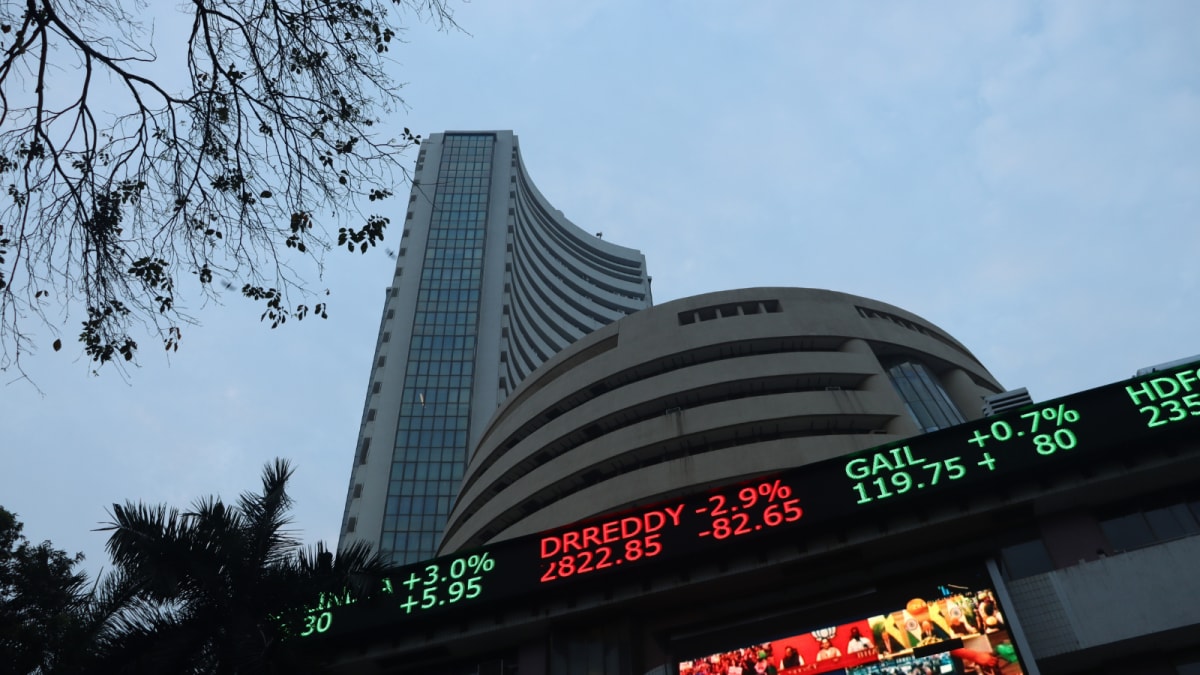Business
Higher tariffs are kicking in. Here’s what Walmart and other retailers said about their impact

Customer with shopping cart in the snack aisle of a Walmart store in Florida City, Florida, Aug. 5, 2025.
JC Milhet | AFP | Getty Images
As some of the biggest names in retail, including Walmart and Home Depot, delivered earnings results in recent weeks, they updated Wall Street on how they and their shoppers are responding to President Donald Trump‘s wave of tariff increases.
The takeaway?
Tariff costs are rising for retailers, and they’ve had to get creative to avoid widespread price hikes.
Yet consumer spending has largely stayed strong so far — and the pinch from higher duties hasn’t been as severe as some companies had feared. Compared with their concerns in the spring, retail executives struck a measured tone and said they don’t expect their costs, or customers’ prices, to jump dramatically.
Walmart had given one of the strongest warnings in May, as CFO John David Rainey said he expected some prices to rise during the summer. In an interview with CNBC on Thursday, however, Rainey said the nation’s biggest retailer has raised prices on some items, but in other parts of its stores has kept prices down or expanded discounts.
“There are certainly areas where we have fully absorbed the impact of higher tariff costs,” he said. “There are other areas where we’ve had to pass some of those costs along. But when you look across the basket of items, we’re certainly trying to keep prices as low as we can.”
Scot Ciccarelli, a retail analyst for Truist, said retailers are raising prices “but not nearly to the degree that might have been expected in early April” when Trump first announced his steep tariffs on dozens of countries.
“Most of the companies are kind of downplaying the impact of tariffs,” he said. “They’ve all talked about substantial mitigation efforts, whether that is diversifying sourcing, whether that is pushing price back to vendors.”
Here are three takeaways from a busy couple of weeks of retail earnings.
Consumer spending is steady — with some exceptions
The drumbeat of steady, but selective, U.S. consumer spending continued this quarter.
At Walmart, the nation’s largest grocer by revenue, sales of private-label items, which tend to cost less than national name brands, were roughly flat, Rainey told CNBC. When customers trade down to those cheaper brands or smaller packs of items, it can signal U.S. households feel strapped for cash.
As companies closely watch the consumer, Rainey said Walmart has seen shopper behavior that’s “very consistent.”
“They continue to be very resilient,” he said.
Walmart and Coach parent company Tapestry both raised their sales outlooks for the full year. Both companies said they saw healthy sales of discretionary items, such as clothing and handbags.
Sales of fashion items, including ladies’ apparel and shoes, accelerated at Walmart in the quarter, Rainey said.
One of Coach’s handbags, the large Kisslock bag that costs $695, sold out within minutes of launching in July, Tapestry CEO Joanne Crevoiserat said last week on the company’s earnings call.
Yet some categories are still a tough sell. And lower-income shoppers have been more sensitive to price changes.
Walmart CEO Doug McMillon said Thursday that the effect of tariffs on spending “has been somewhat muted.” Still, he added some shoppers have noticed and responded when prices creep up.
“As we replenish inventory at post-tariff price levels, we’ve continued to see our costs increase each week, which we expect will continue into the third and fourth quarters,” he said. “Not surprisingly, we see more adjustments in middle- and lower-income households than we do with higher-income households and discretionary categories where item prices have gone up.”
Sales at Home Depot and Lowe’s improved as the quarter went on, with the strongest in July. Still, the companies weren’t ready to predict a turnaround for home improvement.
Lowe’s CEO Marvin Ellison attributed some of the recent pickup in demand to better weather and said “it’s too early for us to call that a trend.” Higher mortgage rates and borrowing costs have dinged homeowners’ willingness to tackle a major renovation or move to a new home, which tends to spur home projects.
Other brands had more dire warnings about spending. On the company’s earnings call, Crocs CEO Andrew Rees described the backdrop for the second half of the year as “concerning” and said its retail orders are weak.
He described Crocs’ customers as “super cautious.”
“They’re not purchasing. They’re not even going to the stores, and we see traffic down,” he said, adding that’s also true at its outlets, which draw more lower-income households.
Customers shop at a Home Depot store on August 19, 2025 in Chicago, Illinois.
Scott Olson | Getty Images
Retailers have blunted the effects of tariffs … so far
Retailers have jumped into action to try to minimize cost increases from tariffs or avoid them altogether.
Those tactics have included importing goods from a wider range of countries, getting items to the U.S. early and stocking up on high-frequency purchases or fresh merchandise that consumers are more likely to buy, even at higher prices, according to interviews of retail executives and earnings calls.
Yet as Walmart showed, retailers have been strategic about price increases — to not only avoid spooking customers, but also to dodge potential scrutiny from the White House. Trump criticized Walmart in May after the company warned it would have to raise prices.
Sharkninja, which makes a wide range of items including blenders and hairstyling tools, has “increased sell price on products, but done it very, very carefully,” CEO Mark Barrocas said in an interview. And in some cases, it had to roll back part of those price increases, he said.
The company has also reduced discounting and raised the price of new merchandise when it debuts. For example, Sharkninja initially planned to launch a new infrared skin care mask called CryoGlow at $299, but instead decided to price it at $349, he said.
For Walmart, Target and Tapestry-owned Coach, importing goods early and having merchandise in warehouses before tariffs took effect have helped them curb the hit from higher rates.
Home Depot Chief Financial Officer Richard McPhail told CNBC most of the imported products the company sold during the quarter landed ahead of tariffs. And Home Depot is taking more steps to blunt the effects: More than half of what the company sells comes from the U.S. and it aims to import no more than 10% from any single country by the end of the year.
Yet the tariff bill is still adding up. Walmart’s McMillon said he expects higher costs from duties to continue through the second half of the fiscal year. Other companies also provided specific estimates of how much the higher duties will cost them.
Even as Tapestry posted sales growth, its shares tumbled last week after it said costs from higher duties would total $160 million this upcoming fiscal year and ding profits.
While Trump’s tariff policy appears more settled than in the spring, tariffs on some countries could still rise.
Many of Trump’s tariffs on countries began in early August, but one of the key rates still hangs in the balance. He delayed higher tariffs on China for 90 days last week. Those had jumped as high as 145%, but are now at 30% as negotiations continue.
Target acknowledged the trade uncertainty with its own strategy. It gave a wider than usual range for its full-year earnings per share outlook.
Inside a Crocs store at Queens Center in New York.
Ryan Baker | CNBC
Strong brands, new moneymakers matter more than ever
Strong brand loyalty and lucrative new businesses have made it easier for some companies to weather the uncertainty.
As homeowners postpone larger projects, Home Depot and Lowe’s have bulked up their business among home professionals to attract steadier traffic and prepare for when demand picks up again. Along with reporting earnings this week, Lowe’s announced it’s buying Foundation Building Materials for $8.8 billion, marking its second acquisition of a home professional-focused company in recent months.
Home Depot announced its own pro-focused deal earlier this summer and made the largest acquisition in its history when it bought SRS Distribution last year.
Walmart also has benefited from newer revenue streams, especially its advertising business and third-party marketplace. Global advertising grew 46% in the most recent quarter, including ad-enabled smart TV maker Vizio, which it acquired last year.
Its marketplace revenue grew by 17% year over year. That business includes sellers who get charged a commission and often pay for services, such as ads on Walmart’s site to promote their products or fulfillment services to have the big-box retailer store pack and ship orders to customers.
Those “more diversified set of profit streams,” which have higher margins than selling a gallon of milk or a T-shirt, make Walmart’s earnings steadier even as the company faces profit pressures, Rainey said on the company’s earnings call.
“We are more than just a standard brick-and-mortar retail business,” he said on the call.
For some brands, customer demand is high enough to help offset tariffs or allow them to charge more.
Sandal maker Birkenstock, for instance, “saw no pushback or cancellations” after its tariff-related July 1 price increases, CEO Oliver Reichert said on the company’s earnings call.
Coach, which has driven up its average price of items over the past five years and reduced its level of markdowns, can better “absorb a lot of these input costs,” Coach CEO Todd Kahn told CNBC.
On the flip side, tariff costs have hit some brands harder, especially if they don’t have the new products customers seem to want or are skittish about what sales will look like later this year. High-performing companies with massive scale such as Walmart often have leverage with vendors to pass on costs — but other businesses might not.
“If you’re a struggling brand, or you’re not really growing your business with a vendor, that vendor has less incentive to absorb incremental costs, whether it’s from tariffs or supply chain or whatever,” Truist’s Ciccarelli said.
Target said its profit margins in the quarter were hurt by the costs of cancelling orders. Crocs also said it is reducing orders for the back half of the year.
Crocs took another unusual step: Rees said the company is taking back older inventory from retailers that sell its Heydude shoe brand and swapping it out with fresher styles.
Business
Key Financial Deadlines That Have Been Extended For December 2025; Know The Last Date

New Delhi: Several crucial deadlines have been extended in December 2025, including ITR for tax audit cases, ITR filing and PAN and Aadhaar linking. These deadlines will be crucial in ensuring that your financial affairs operate smoothly in the months ahead.
Here is a quick rundown of the important deadlines for December to help you stay compliant and avoid last-minute hassles.
ITR deadline for tax audit cases
The Central Board of Direct Taxes has extended the due date of furnishing of return of income under sub-Section (1) of Section 139 of the Act for the Assessment Year 2025-26 which is October 31, 2025 in the case of assessees referred in clause (a) of Explanation 2 to sub-Section (1) of Section 139 of the Act, to December 10, 2025.
Belated ITR filing deadline
A belated ITR filing happens when an ITR is submitted after the original due date which is permitted by Section 139(4) of the Income Tax Act. Filing a belated return helps you meet your tax obligations, but it involves penalties. You can only file a belated return for FY 2024–25 until December 31, 2025. However, there will be a late fee and interest charged.
PAN and Aadhaar linking deadline
The Income Tax Department has extended the deadline to link their PAN with Aadhaar card to December 31, 2025 for anyone who acquired their PAN using an Aadhaar enrolment ID before October 1, 2024. If you miss this deadline your PAN will become inoperative which will have an impact on your banking transactions, income tax return filing and other financial investments.
Business
Stock Market Live Updates: Sensex, Nifty Hit Record Highs; Bank Nifty Climbs 60,000 For The First Time

Stock Market News Live Updates: Indian equity benchmarks opened with a strong gap-up on Monday, December 1, touching fresh record highs, buoyed by a sharp acceleration in Q2FY26 GDP growth to a six-quarter peak of 8.2%. Positive cues from Asian markets further lifted investor sentiment.
The BSE Sensex was trading at 85,994, up 288 points or 0.34%, after touching an all-time high of 86,159 in early deals. The Nifty 50 stood at 26,290, higher by 87 points or 0.33%, after scaling a record intraday high of 26,325.8.
Broader markets also saw gains, with the Midcap index rising 0.27% and the Smallcap index advancing 0.52%.
On the sectoral front, the Nifty Bank hit a historic milestone by crossing the 60,000 mark for the first time, gaining 0.4% to touch a fresh peak of 60,114.05.
Meanwhile, the Metal and PSU Bank indices climbed 0.8% each in early trade.
Global cues
Asia-Pacific markets were mostly lower on Monday as traders assessed fresh Chinese manufacturing data and increasingly priced in the likelihood of a US Federal Reserve rate cut later this month.
According to the CME FedWatch Tool, markets are now assigning an 87.4 per cent probability to a rate cut at the Fed’s December 10 meeting.
China’s factory activity unexpectedly slipped back into contraction in November, with the RatingDog China General Manufacturing PMI by S&P Global easing to 49.9, below expectations of 50.5, as weak domestic demand persisted.
Japan’s Nikkei 225 slipped 1.6 per cent, while the broader Topix declined 0.86 per cent. In South Korea, the Kospi dropped 0.30 per cent and Australia’s S&P/ASX 200 was down 0.31 per cent.
US stock futures were steady in early Asian trade after a positive week on Wall Street. On Friday, in a shortened post-Thanksgiving session, the Nasdaq Composite climbed 0.65 per cent to 23,365.69, its fifth consecutive day of gains.
The S&P 500 rose 0.54 per cent to 6,849.09, while the Dow Jones Industrial Average added 289.30 points, or 0.61 per cent, to close at 47,716.42.
Business
Global Conflicts Drive Arms Industry to $679 Billion Record Revenues – SUCH TV

Sales by the world’s top 100 arms makers reached a record $679 billion last year, as conflicts in Ukraine and Gaza fueled demand, according to researchers. Production challenges, however, continued to hamper timely deliveries.
The figure represents a 5.9 percent increase from the previous year, and over the 2015–2024 period, revenues for the top 100 arms makers have grown by 26 percent, according to a report by the Stockholm International Peace Research Institute (SIPRI).
“Last year, global arms revenues reached the highest level ever recorded by SIPRI, as producers capitalized on strong demand,” said Lorenzo Scarazzato, a researcher with the SIPRI Military Expenditure and Arms Production Programme.
Regional Trends
According to SIPRI researcher Jade Guiberteau Ricard, the growth is mostly driven by Europe, though all regions saw increases except Asia and Oceania.
The surge in Europe is linked to the war in Ukraine and heightened security concerns regarding Russia.
Countries supporting Ukraine and replenishing their stockpiles have also contributed to rising demand.
Ricard added that many European nations are now seeking to modernize and expand their militaries, creating a new source of demand.
US and European Arms Makers
The United States hosts 39 of the world’s top 100 arms makers, including the top three: Lockheed Martin, RTX (formerly Raytheon Technologies), and Northrop Grumman. US companies saw combined revenues rise 3.8 percent to $334 billion, nearly half of the global total.
European arms makers (26 companies in the top 100) recorded aggregate revenues of $151 billion, a 13 percent increase.
The Czech company Czechoslovak Group recorded the sharpest rise, with revenues jumping 193 percent to $3.6 billion, benefiting from the Czech Ammunition Initiative, which supplies artillery shells to Ukraine.
However, European producers face challenges in meeting increased demand, as sourcing raw materials has become more difficult.
Companies like Airbus and France’s Safran previously sourced half of their titanium from Russia before 2022 and have had to identify new suppliers.
Additionally, Chinese export restrictions on critical minerals have forced firms such as France’s Thales and Germany’s Rheinmetall to restructure supply chains, raising costs.
Russian Arms Industry
Two Russian arms makers, Rostec and United Shipbuilding Corporation, are among the top 100, with combined revenues rising 23 percent to $31.2 billion, despite component shortages caused by international sanctions.
Domestic demand largely offset the decline in exports. However, Russia’s arms industry faces a shortage of skilled labor, limiting its ability to sustain production rates necessary for ongoing military operations.
Israeli weapons still popular
The Asia and Oceania region was the only region to see the overall revenues of the 23 companies based there go down — their combined revenues dropped 1.2 percent to $130 billion.
But the authors stressed that the picture across Asia was varied and the overall drop was the result of by a larger drop among Chinese arms makers.
“A host of corruption allegations in Chinese arms procurement led to major arms contracts being postponed or cancelled in 2024,” Nan Tian, Director of SIPRI’s Military Expenditure and Arms Production Programme, said in a statement.
Tian added that the drop deepened “uncertainty” around China’s efforts to modernise its military.
In contrast, Japanese and South Korean weapons makers saw their revenues increase, also driven by European demand.
Meanwhile, nine of the top 100 arms companies were based in the Middle East, with combined revenues of $31 billion.
The three Israeli arms companies in the ranking accounted for more than half of that, as their combined revenues grew by 16 percent to $16.2 billion.
SIPRI researcher Zubaida Karim noted in a statement that “the growing backlash over Israel’s actions in Gaza seems to have had little impact on interest in Israeli weapons”.
-

 Sports1 week ago
Sports1 week agoWATCH: Ronaldo scores spectacular bicycle kick
-

 Entertainment1 week ago
Entertainment1 week agoWelcome to Derry’ episode 5 delivers shocking twist
-

 Politics1 week ago
Politics1 week agoWashington and Kyiv Stress Any Peace Deal Must Fully Respect Ukraine’s Sovereignty
-

 Business1 week ago
Business1 week agoKey economic data and trends that will shape Rachel Reeves’ Budget
-

 Tech6 days ago
Tech6 days agoWake Up—the Best Black Friday Mattress Sales Are Here
-

 Politics1 week ago
Politics1 week ago53,000 Sikhs vote in Ottawa Khalistan Referendum amid Carney-Modi trade talks scrutiny
-

 Fashion1 week ago
Fashion1 week agoCanada’s Lululemon unveils team Canada kit for Milano Cortina 2026
-

 Tech6 days ago
Tech6 days agoThe Alienware Aurora Gaming Desktop Punches Above Its Weight


1729471601-0/image-(8)1729471601-0-640x480.webp)









